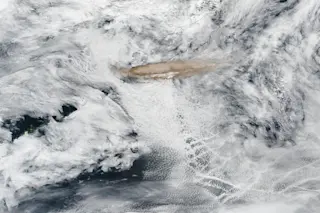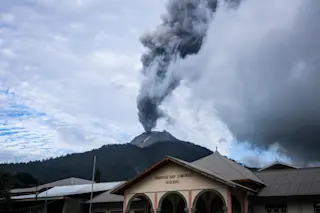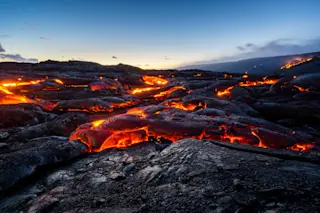It has been awhile since we’ve had an unexpected eruption, but last night Raikoke in the Kuril Islands off Russia had an impressive explosion. Most people (and volcanologists) are likely unfamiliar with this remote volcano and rightly so — only ~140 people live within 100 kilometers and the last known eruption was in 1924. However, the last two eruptions (1924 and 1778) were both VEI 4 events.
The new eruption sent a brown plume of volcanic ash through the white cloud deck. Estimates for the plume height from the Tokyo VAAC are ~13 kilometers (43,000 feet) spreading almost due east. This means that the eruption is likely prompting diversions for aircraft traveling between North America/Europe and Asia.
Himawari-8 captured the growing plume in true color as the eruption commenced (above) as a sequence of smaller blast followed by the big one. You also can watch a sequence from NOAA that ...














